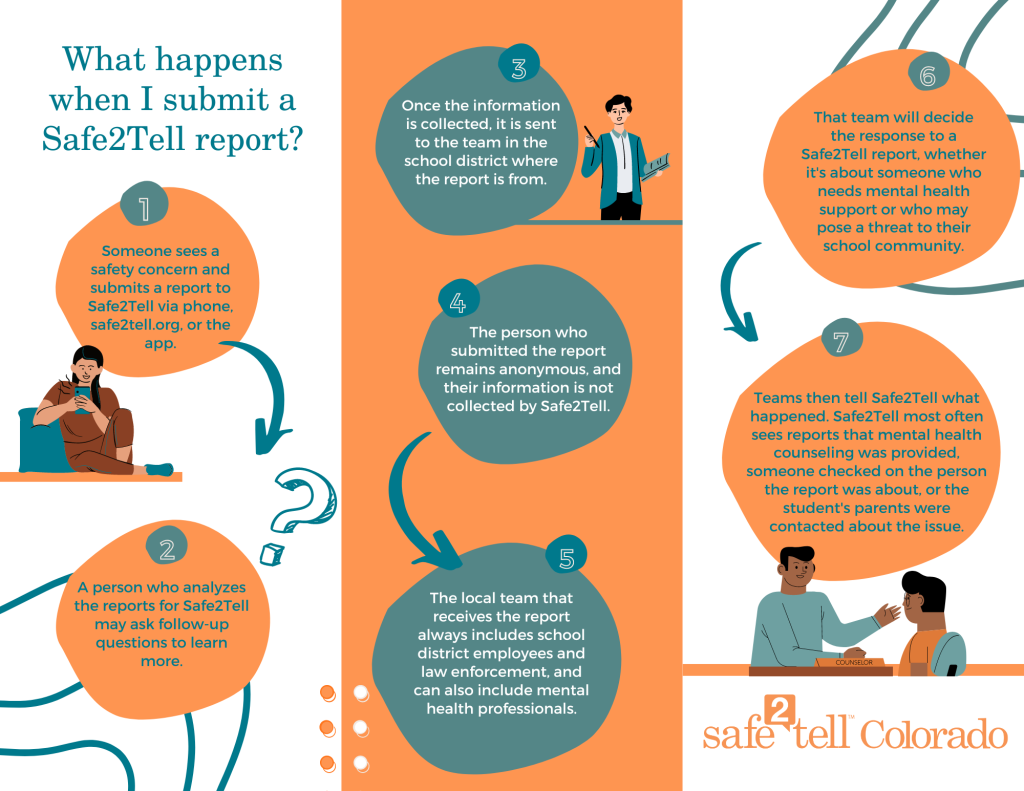FAQ

What is Safe2Tell?
Safe2Tell gives students, parents, and community members a safe, anonymous way to report any threats to their safety or the safety of someone else. Safe2Tell is a nationally recognized and replicated model for anonymous reporting.
How does Safe2Tell work?
Anyone who has information about a potentially dangerous situation can call the toll-free, state-wide number at 1-877-542-7233, make a web report by clicking the Make a Report button at the top and side of the page, by downloading the mobile app and making a report from a smartphone, or by texting S2TCO to 738477. A trained Safe2Tell analyst will then forward the information to local teams consisting of schools, law enforcement, mental health, and/or other partners. Local partners have full authority over report response and outcomes.
When can I make a report to Safe2Tell?
You can call us or make a web report any time, any day. Making a Safe2Tell report is always free.
What can I report to Safe2Tell?
You can report anything related to school and youth safety/mental health where your desire is to protect, prevent, or help. If it is not a Safe2Tell matter, we will refer you to the appropriate resource if needed.
How do I remain anonymous?
Your anonymity is protected by Colorado law (C.R.S. Section 24-31-601 et seq.). Safe2Tell will not ask for your identifying information. Safe2Tell will ask for information about the situation causing you concern. NOTE: Calls to our administrative line, emails, and social media posts are not protected under the Safe2Tell law and are not processed as anonymous reports.

